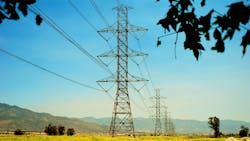Impact of Microgrids
We have a number of recognized transmission and distribution experts serving on our board of "Grid Masters." Several times each month we’ll post what we judge to be the toughest questions that also have high interest to our readers. At least one of our experts will respond. Want to challenge our Grid Masters for a chance to win?
Q: For the U.S.: What will be the impact of the microgrid or the smart grid on our old grid during the next 10 years? Actually, what is the average age of our grid? In 2023, what will be the average age of our grid? How will the microgrid or the smart grid impact the average age and the effectiveness or our grid during the next 10 years?
Guy Houle, Canada
A: Average age of our grid is not easily determined, but it is not atypical to find equipment of the grid that is 20 to 40 years old. As to the power plant infrastructure, it could be even older. The impact of microgrids and smart grids on the "old" traditional centralized grid will really depend on where it is and how critical the specific microgrid area (microgrid load) is. For example, the microgrids are most relevant for critical loads, which , even in times of wide-spread outages due to hurricanes or other natural disasters, should remain operationals. These kinds of loads are military bases, data centers, hospital complexes, etc. Will the microgrids completely replace the old centralized grid? The answer is: most likely not. However, the two concepts, microgrids and centralized grids , will function side by side. Ten years is really not a long time in power system terms so I do not expect the situation to dramatically change in such a short period of time.
As to the smart grid: The primary functionality that distinguish smart grid from the "old" grid is the fact that the power flow is multidirectional and that there are many energy sources besides large centralized power plants. If we adopt this definition, the smart grid is not only about "smart meters" but primarily a wider grid control, dynamic loading, and most importantly, more active relationsip between the energy provider (supplier) and energy consumer (customer). This is the business driver for all the changes in the power grid. Without this business driver, i.e. without the financial benefits that both parties can draw from (suppliers and consumers have to benefit) smart grids or microgrids will not spread.
Mietek Glinkowski
Director of Technology, Power Products
ABB
See previous questions and answers and join the discussion. Add your comments below:
